1. Jennette JC, Falk RJ, Bacon PA, Basu N, Cid MC, Ferrario F, et al. 2012 revised International Chapel Hill Consensus Conference Nomenclature of Vasculitides. Arthritis Rheum. 2013; 65(1):1–11. PMID:
23045170.
2. Mills JA, Michel BA, Bloch DA, Calabrese LH, Hunder GG, Arend WP, et al. The American College of Rheumatology 1990 criteria for the classification of Henoch-Schönlein purpura. Arthritis Rheum. 1990; 33(8):1114–1121. PMID:
2202310.
3. Ozen S, Pistorio A, Iusan SM, Bakkaloglu A, Herlin T, Brik R, et al. EULAR/PRINTO/PRES criteria for Henoch-Schönlein purpura, childhood polyarteritis nodosa, childhood Wegener granulomatosis and childhood Takayasu arteritis: Ankara 2008. Part II: final classification criteria. Ann Rheum Dis. 2010; 69(5):798–806. PMID:
20413568.
4. Rosenblum ND, Winter HS. Steroid effects on the course of abdominal pain in children with Henoch-Schӧnlein purpura. Pediatrics. 1987; 79(6):1018–1021.
5. Aalberse J, Dolman K, Ramnath G, Pereira RR, Davin JC. Henoch-Schönlein purpura in children: an epidemiological study among Dutch paediatricians on incidence and diagnostic criteria. Ann Rheum Dis. 2007; 66(12):1648–1650. PMID:
17472987.
6. Abdel-Al YK, Hejazi Z, Majeed HA. Henoch Schönlein purpura in Arab children. Analysis of 52 cases. Trop Geogr Med. 1990; 42(1):52–57. PMID:
2260196.
7. Mossberg M, Segelmark M, Kahn R, Englund M, Mohammad AJ. Epidemiology of primary systemic vasculitis in children: a population-based study from southern Sweden. Scand J Rheumatol. 2018; 7:1–8.
8. Penny K, Fleming M, Kazmierczak D, Thomas A. An epidemiological study of Henoch-Schönlein purpura. Paediatr Nurs. 2010; 22(10):30–35.
9. Gardner-Medwin JM, Dolezalova P, Cummins C, Southwood TR. Incidence of Henoch-Schönlein purpura, Kawasaki disease, and rare vasculitides in children of different ethnic origins. Lancet. 2002; 360(9341):1197–1202. PMID:
12401245.
10. Piram M, Maldini C, Biscardi S, De Suremain N, Orzechowski C, Georget E, et al. Incidence of IgA vasculitis in children estimated by four-source capture-recapture analysis: a population-based study. Rheumatology (Oxford). 2017; 56(8):1358–1366. PMID:
28444335.
11. Yang YH, Hung CF, Hsu CR, Wang LC, Chuang YH, Lin YT, et al. A nationwide survey on epidemiological characteristics of childhood Henoch-Schönlein purpura in Taiwan. Rheumatology (Oxford). 2005; 44(5):618–622. PMID:
15671050.
12. Piram M, Mahr A. Epidemiology of immunoglobulin A vasculitis (Henoch-Schönlein): current state of knowledge. Curr Opin Rheumatol. 2013; 25(2):171–178. PMID:
23318735.
13. Lee YH, Kim YB, Koo JW, Chung JY. Henoch-Schӧnlein purpura in children hospitalized at a tertiary hospital during 2004–2015 in Korea: epidemiology and clinical management. Pediatr Gastroenterol Hepatol Nutr. 2016; 19(3):175–185.
14. Blanco R, Martínez-Taboada VM, Rodríguez-Valverde V, García-Fuentes M, González-Gay MA. Henoch-Schönlein purpura in adulthood and childhood: two different expressions of the same syndrome. Arthritis Rheum. 1997; 40(5):859–864. PMID:
9153547.
15. Nakaseko H, Uemura O, Nagai T, Yamakawa S, Hibi Y, Yamasaki Y, et al. High prevalence of sinusitis in children with Henoch-Schönlein purpura. Int J Pediatr. 2011; 2011:562638. PMID:
21977045.
16. Haroon M. Should children with Henoch-Schӧnlein purpura and abdominal pain be treated with steroids? Arch Dis Child. 2005; 90(11):1196–1198.
17. Weiss PF, Feinstein JA, Luan X, Burnham JM, Feudtner C. Effects of corticosteroid on Henoch-Schönlein purpura: a systematic review. Pediatrics. 2007; 120(5):1079–1087. PMID:
17974746.
18. Niaudet P, Habib R. Methylprednisolone pulse therapy in the treatment of severe forms of Schönlein-Henoch purpura nephritis. Pediatr Nephrol. 1998; 12(3):238–243. PMID:
9630046.
19. Mollica F, Li Volti S, Garozzo R, Russo G. Effectiveness of early prednisone treatment in preventing the development of nephropathy in anaphylactoid purpura. Eur J Pediatr. 1992; 151(2):140–144. PMID:
1343079.
20. Hahn D, Hodson EM, Willis NS, Craig JC. Interventions for preventing and treating kidney disease in Henoch-Schönlein Purpura (HSP). Cochrane Database Syst Rev. 2015; (8):CD005128. PMID:
26258874.
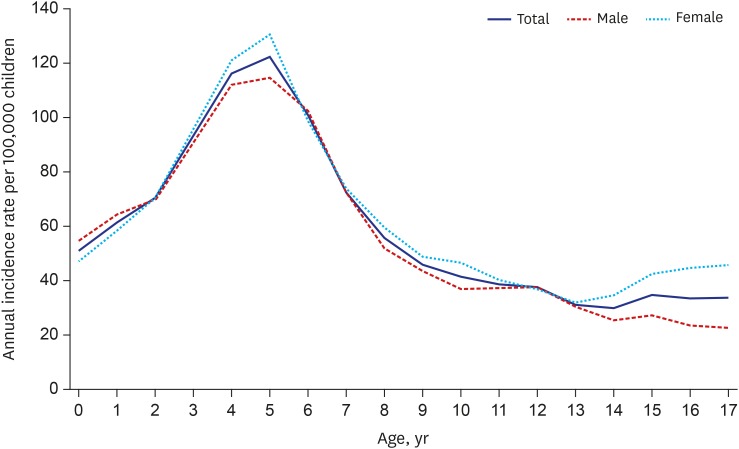
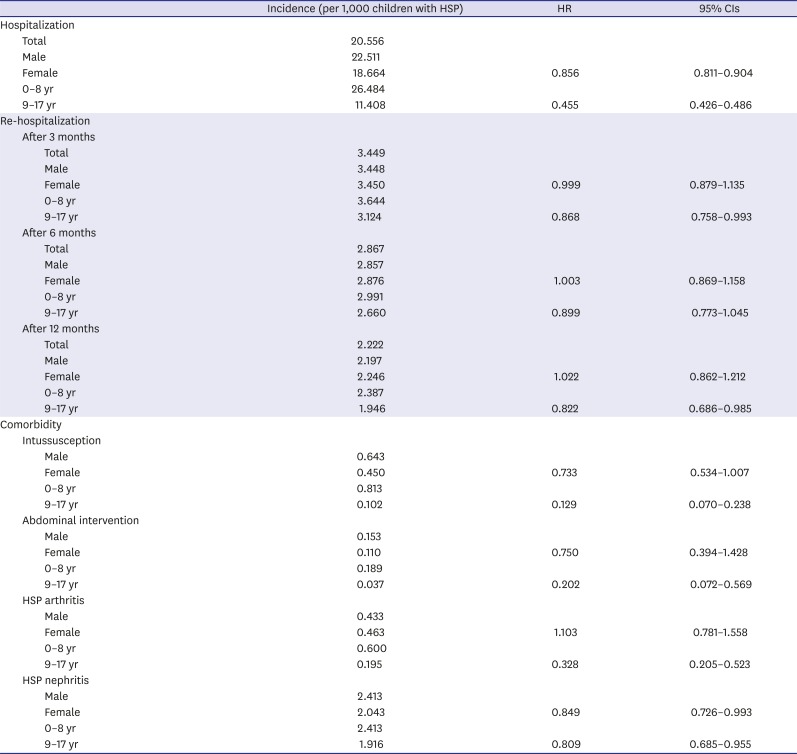
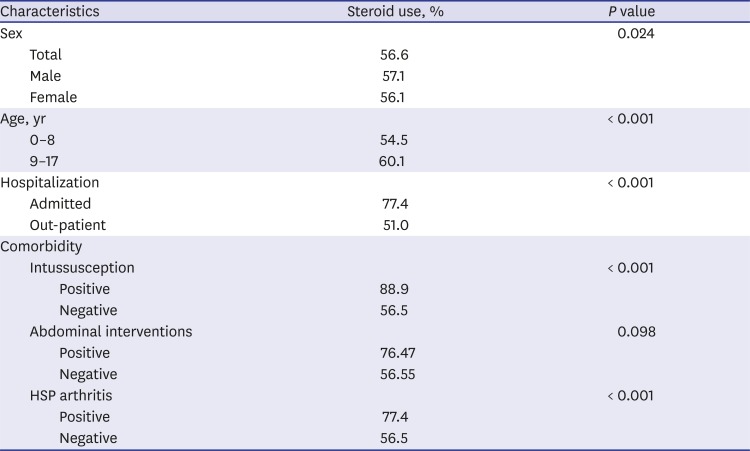




 PDF
PDF Citation
Citation Print
Print



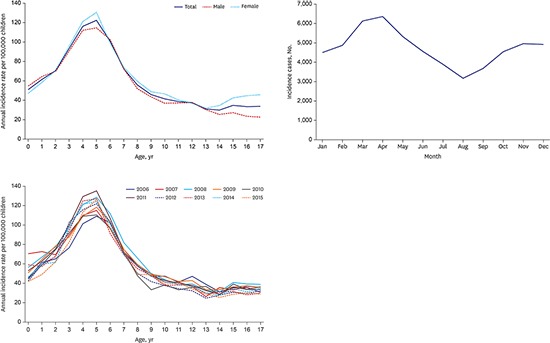
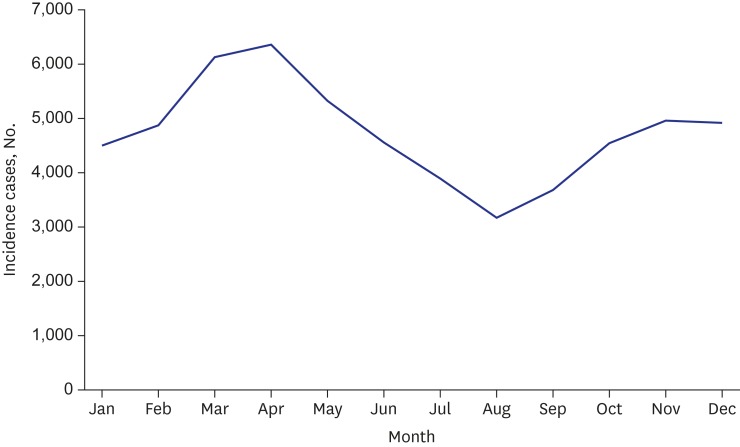
 XML Download
XML Download